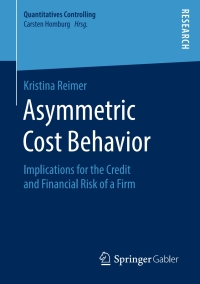Question
I. TRUE or FALSE 1. Relevant costs are expected future costs which differ between the decision alternatives. 2. Future costs that don't differ between alternatives
I. TRUE or FALSE
1. Relevant costs are expected future costs which differ between the decision alternatives.
2. Future costs that don't differ between alternatives at hand are relevant costs.
3. Sunk costs are always irrelevant costs.
4. Opportunity costs have always been incurred as a result of past action.
5. Incremental costs are always relevant to decision making.
6. A special order is profitable whenever the revenue exceeds the fixed manufacturing costs for the period.
7. In accept or reject a special order decision making, fixed costs are relevant.
8. Variable costs incurred prior to split-off are relevant in deciding whether the product should be processed further.
9. Incremental costs are expected to increase regardless of the course of action chosen.
10. Responsibility accounting is also activity accounting and profitability accounting.
11. A responsibility center is a unit within the organization which has no control over costs, revenues, and/or investment funds.
12. A revenue center has control over both cost and revenue.
13. Performance of a revenue center is measured by preparing the income statements using the contribution approach, presenting both the actual results and budgeted figures.
14. Managers in a decentralized organization may have a narrow focus on their own units' performance.
15. Maximum transfer price is the price that would leave the selling division no worse off if the good is sold internally.
16. Cost-based price is the transfer price that is the sum of costs incurred by the producing division plus an agreed-on profit percentage.
17. Cost-based prices should be used when no clear-cut market price exists.
18. A controllable cost is any cost that can be influenced by a responsibility center manager for a period of time.
19. Average operating assets is used as the denominator in computing the margin in an ROI approach.
20. Return on investment equals margin divided by turnover.
21. Return on investment has 2 components: segment margin and asset turnover.
22. The basic purpose of a responsibility accounting system is variance analysis.
23. The correct transfer price is the market price from a perfectly competitive market.
24. In analyzing transfer prices, the buyer will not willingly purchase a product for less than the incremental costs incurred to manufacture the product internally.
25. The minimum transfer price equals incremental costs less opportunity costs.
26. The balanced scorecard consists of an integrated system of performance measures that are derived from and support the firm's strategy.
27. A measure of the internal business perspective of the balanced scorecard is employee satisfaction.
28. The first step to successful balance scorecard implementation is clarifying the objectives of all four balanced scorecard measurement perspectives.
29. Balanced scorecard objectives are in balance when financial performance measurements are less than the majority of measurements.
30. Throughput time consists of process time only.
31. Capital budgeting is an investment concept since it involves commitment of funds in order to receive some desired return in the future.
32. The minimum acceptable rate of return may equal cost of capital that the firm must pay to attract investment fund.
33. The higher the payback period reciprocal, the less attractive the project becomes.
34. If the NPV is positive, it means that the project will earn a return lower than the cost of capital.
35. Internal rate of return is the equivalent maximum rate of interest that could be paid each year for the capital employed over the life of an investment without loss on the project.
36. The payback period measures the economic life of an investment.
37. Opportunity cost does not affect the NPV of an investment project.
38. Salvage value is a cash outflow.
39. Process reengineering is a business process in which units are produced and materials are purchased only as needed to meet actual customer demand.
40. Constraint is eliminated in business reengineering.
41. Throughput time is the time required to make a completed unit of product starting with raw materials.
42. Theory of Constraints is an approach to continuous improvement that focuses on customers and using teams of front-line workers to systematically identify and solve problems.
43. Quality is achieved more systematically if the firm focuses on appraisal costs.
44. Management by objectives is a characteristic of total quality management.
45. The most important component of quality control is conforming to ISO specifications.
46. The cost of scrap is a prevention cost.
47. The cost of statistical quality control in a product quality cost system is an internal failure cost.
48. Reengineering is a management technique in which managers and workers commit ongoing betterment in quality and other critical success factors.
49. Design engineering is an appraisal cost.
50. Continuous improvement means searching for ways to increase overall efficiency by reducing waste, improving quality, and reducing costs
Step by Step Solution
There are 3 Steps involved in it
Step: 1

Get Instant Access to Expert-Tailored Solutions
See step-by-step solutions with expert insights and AI powered tools for academic success
Step: 2

Step: 3

Ace Your Homework with AI
Get the answers you need in no time with our AI-driven, step-by-step assistance
Get Started


